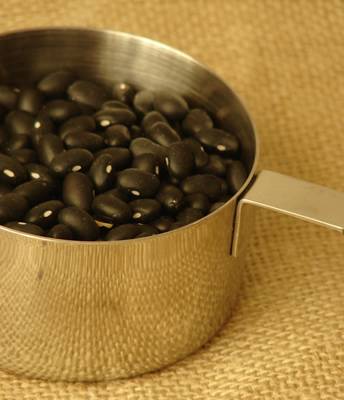In these days of rising food prices it’s even more important than ever to cook at home. We have assembled a list of tips and strategies for the home chef to assemble low-cost, healthy meals for their families. assembled a list of tips and strategies for the home chef to assemble low-cost, healthy meals for their families. 1. Buy Bulk - Beans, lentils, rice, grains, flour, sugar etc… It is surprising how many different dry goods can be found in the bins at a well-stocked grocery store. Often the food in bulk does actually get replaced faster than food on the shelf and you can buy exactly as much as you need. So make it a habit to buy food in bulk, it’s usually remarkably cheaper and you have more control over how much you buy.
2. Don’t buy pre-cut meat. If you are looking to make a stew or a even a roast, you can save significant amounts of money by buying a large cut of meat and then cutting and cleaning the piece yourself. By buying a larger piece, you can cut exactly the size piece you need and you can freeze the rest.
3. Buy frozen vegetables. Some fresh vegetables are always relatively low in cost such as carrots, potatoes, celery etc. But vegetables that are affected by the season tend to be very expensive during most of the year such as asparagus, broccoli and peas. Look for those items at the frozen isle instead, where they are usually considerably cheaper. Frozen foods are most of the time more nutritious anyway since they are frozen at the peak of their ripeness.
4. Individually freeze certain meats. Some kinds of meats such as bacon and sausage are terrific flavor agents and can lift a dish immensely, even in small amounts. However, you often don’t need to use a whole pack at once. Instead, buy a large pack, then individually freeze packs of 3-4 slices of bacon or sausage links in aluminum foil and then in plastic bags. That way, you always have some on hand, and a large pack goes a long way.
5. Don’t buy canned broth. Canned broth is a big money-grabbing ingredient that you often need quite a bit of if you are making soups or stews. Instead, look for bullion cubes which you dilute in water. These little cubes give you a lot more for your money, and you can always adjust the salt content of your dish if you are concerned about sodium.
6. Buy vegetables that are in season. Don’t be stubborn and buy ingredients for a summer salad in the winter. Embrace the reasonably priced vegetables that the season brings. For example, winter cabbage makes an excellent salad and green kale provide a hearty alternative in light soups.
7. Cook double batches of food occasionally so you can freeze portions to have on hand. Then when you come home and want food with no effort, it’s easy to heat up some lasagna from last week or butternut squash soup from the week before.
8. Label all your frozen foods with the content and the date. It’s too bad when you have a well-stocked freezer and end up throwing a lot away because you don’t know how long it’s been there. Make it a habit to always mark each meal or ingredient thats in your freezer.
9. Seek out oriental markets and stores for those hard-to-find ingredients. Often, exotic foods can be found for considerably lower prices in these specialty stores as opposed to your regular grocery store.
10. Eat a diet rich in legumes, whole grains and root fruits. The cheapest foods are often the best for us. By eating home cooked meals with lots of beans, peas and lentils as well as a variety of whole grains such as brown rice, pearl barley and wheat berries you ensure a nutritious balance and a budget-friendly price.
|

